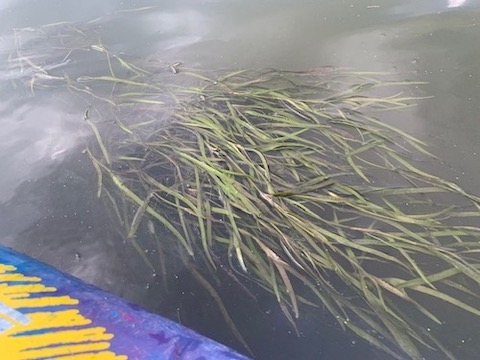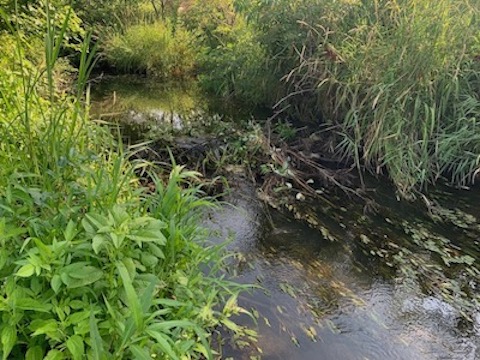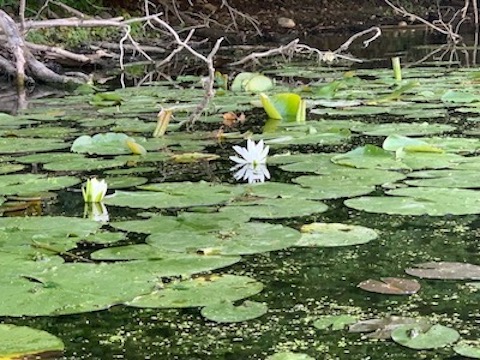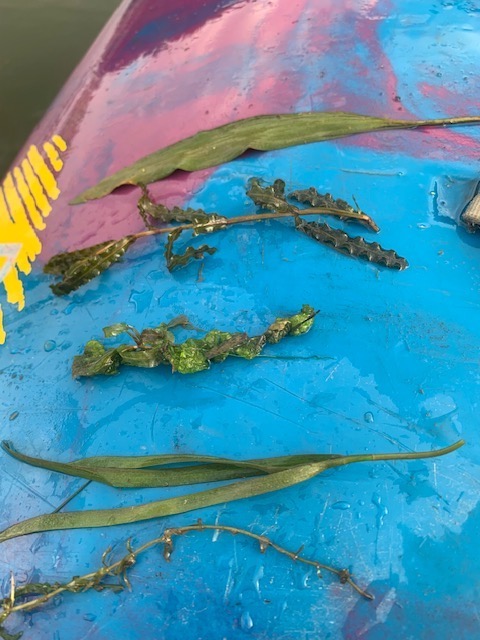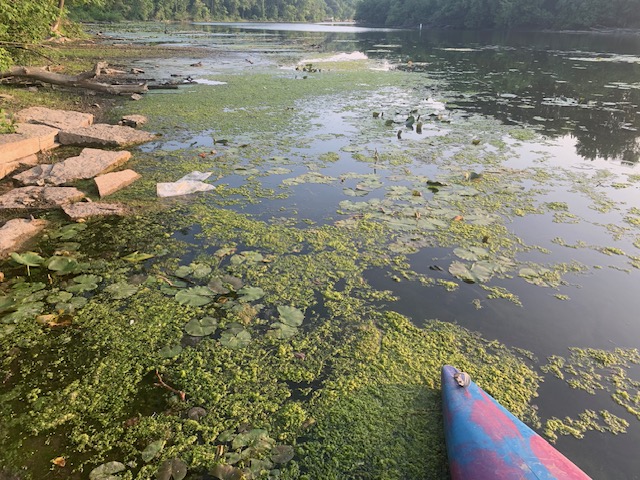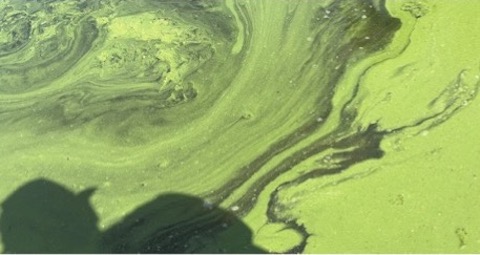Right now aquatic plants are thriving in our watershed!
It is said that you can never step in the same river twice, since it is always flowing and thus changing. Weather conditions change with the seasons in temperate climates like ours. Plants and animals have developed their successful strategies to be in synch with the changes. Not blooming or giving birth too early or too late are examples. The complicated set of environmental conditions that are present at any given time controls who thrives and who may barely survive. Right now, aquatic plants are thriving in our watershed.
Why So Many Plants?
A month ago, a common question from citizens in our watershed was “Why is the river so clear?”
Tom Schrader’s article explained the factors involved in the early 2023 summer condition. A common question now, is “Why are there so many plants in the river?” Of course, that is a very complex story.
Plants Aplenty
The Fox River is naturally nutrient rich with its source waters flowing over and through some of the most fertile soil in the world. The presence of aquatic plants and algae is natural and a beneficial component of the ecosystem providing food, habitat, and oxygen. To swimmers, fishermen, and some boaters it is a nuisance. When plants get out of balance, their decay can create excess sediment on the bottom that smothers the macroinvertebrates that clean the river and provide food in the ecosystem.
When the river slows, such as along shorelines and behind dams, vascular aquatic plants (VAPs) can catch a foothold and begin colonizing. From water lilies to pondweed varieties, they have long stems anchored in the river bottom sediments while growing upwards to reach the surface sunlight. Some plants are floating, like Duckweed, and accumulate around obstructions. After several months of lower-than-normal rainfalls in our watershed, even free-flowing sections of the river have slowed, allowing more plants to thrive. For some of us it is a nature show to behold, to others it is a mess. Not so many years ago, tourists came to the Fox River to see the floating Lotus blossoms.
And Then There is Algae
Algae is a very complicated group. Algae is defined as a group of predominantly aquatic, photosynthetic, and nucleus-bearing organisms that lack the true roots, stems, leaves, and specialized multicellular reproductive structures of plants. The group is not plants and includes some types of bacteria. Algae comes in two basic varieties: sestonic and benthic. Sestonic algae drifts in and with the river current. Benthic algae on the other hand attaches to anything it can to keep from being washed downstream.
One special characteristic of many sestonic algae is their air “vacuoles”. The vacuoles are like little bags that fill with air during the day, helping the algae float to the surface where they can better reach the sunlight. On a sunny day in calm waters most of the sestonic algae is not disbursed in the water column but can be seen floating on the surface, giving the impression of a large algae bloom.
Blue Green Algae
There is another kind of algae that really isn’t algae at all, Cyanobacteria. Cyanobacteria is a special class of bacteria that is almost always referred to as blue green algae. One of the oldest organisms on Earth, Cyanobacteria, like algae, can photosynthesize.
Cyanobacteria also, under specific conditions yet to be understood by researchers, can create undesirable chemical byproducts. When this happens the occurrence is known as a harmful algae bloom (HAB). HABs can create taste and odor problems in drinking water supplies. Worse, some Cyanobacteria create enough toxic chemicals that can be a health threat to humans, pets, and wildlife.
While there is still much to be learned about Cyanobacteria and HABs, we do know Cyanobacteria is more likely to prosper in warmer and deeper waters than most algae. With that in mind we can suggest that without its dams our Fox will be a cooler and slightly shallower river, less susceptible to seeing HABs develop in the future.
Much has been done over the past several decades to reduce plant growth in our the Fox River, whether it is VAPs, algae or Cyanobacteria by improved sewage treatment and agricultural practices. While there is little we can do in the short term to prevent drought-encouraged aquatic plant growth, as we continue to restore our Fox to its original channel the less likely these plants will grow to become nuisances or worse.

